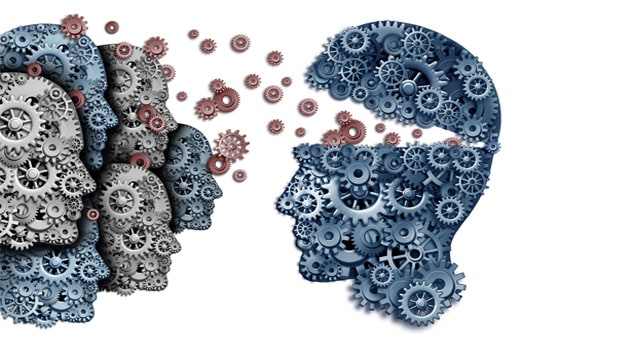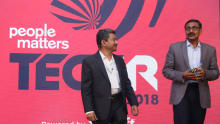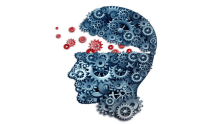Spearheading digital transformation in learning

Create the Future Read similar articles

Digital transformation has been rightly touted as a “script in the making”. Three years ago, when organizations started talking about digital transformation, it was a mere buzzword. Organizations then realized the potential of digital but had very little clarity on how to go about embracing the digital wave. They recognized the need for capability building in the digital age, but several challenges persisted. One such challenge is that the backbone of digital transformation is built on technology, and technology is shifting very rapidly. For example, three years ago technology most probably meant SMAC (Social, Media, Analytics, Cloud). Today, we have come a long way- the technological elements that formulate digital now incorporate humanized big data, the blockchain, AI and other cutting-edge transformative technologies. In fact, the key difference between previous and recent transformations is the speed- most organizations were not prepared to keep pace with the speed of change.
The L&D Role in Digital Journeys
Due to this state of flux, organizations today struggle with building capability in new-age areas. Accordingly, the role of the modern-day L&D professional has evolved too. Some of the key lookouts in this digital transformation journey, from an L&D perspective, are:
1. Understanding what are the technology elements to bet upon and how to build capabilities around that.
2. Having understood a technology, how to actually implement a strategy that could result in capability building. The fact is that emerging-skills talent is hard to get from outside, so L&D must find ways to quickly build talent from within, and scale it up across the organization.
3. Changing the culture of learning. Employers must realize that people cannot be forced to learn just because the organization mandates that, they must be incentivized to learn. L&D must help point people towards the right direction, help them figure out what their competencies are, and guide them how to build the right competencies. Learning needs to be highly personalized and the accountability of learning needs to be shifted back to the employee rather than on the organization.
How exactly do L&D and business leaders achieve this? The answer lies in how learning-centric organizations wire themselves differently.
Laying a Strong Foundation to Embrace Change
Learning is not just an organizational phenomenon. We, as humans are constantly learning. One such example can be seen in society and families, in terms of what happens when disruptions happen. For example, a family crisis makes all relatives and friends come together and rally to extend help and support. Behind all this is a feeling of connectedness. L&D can take a leaf out of this page, and use the same human-nature to build an organizational learning strategy. When people come together from different walks of life, success comes from building “connectedness”. Leaders must leverage this basic human nature and strive to create a “feeling of community” across the organization, for example between sales, software, and other departments. This strategy is called mobilization i.e. getting communities together around a point of disruption. It is essentially about creating a sense of “How do we really take this on together?” Discussing common areas of concerns makes everyone understand the challenge in the same way and helps builds confidence that the challenge can be overcome.
We see another interesting life-lesson from society. When crisis strikes, people go back to practicing rituals. They rediscover rituals and find their faith to tide over the crises. HR and L&D must use this human-affinity for faith by rediscovering organizational rituals. Leaders must identify what ties people together, and revive those fundamental rituals which we somewhere lose as a part of disruption. Reliving rituals can go a long way in encouraging winning behaviors. Organizations that stand on a strong foundation of “connect” and “belief in the core” can sustain through highly disruptive change. It is L&D, HR and business leaders’ job to instill that sense of connection and belief in its people. And it is ultimately every employee’s responsibility to be responsive to the change, by making learning an integral part of professional life.
The Role of L&D in Enabling Capability Transformation
Once the strong foundations of "connect "and "belief" are laid, what next? L&D must then enable real-life learning. The challenge here is that people who are designing learning interventions are not learners themselves, and hence don’t think like the learners. Because they are not at the learning end of the spectrum, they may not exactly experience how roles are evolving and changing. For one, roles are becoming more invisible. Roles are becoming more compounded, they are effectively leveraging skills and capabilities in new ways than before. Traditional L&D teams are unable to figure out how exactly the role is being performed. Last but not the least, roles are becoming more complex, consolidated and comprehensive. This is creating a challenge of not knowing what causes a role to be successful. As a result, L&D is often unable to figure out what are the elements of success, and how can they recreate those elements to build a continuously learning organization. L&D can look into the following ways to create the ideal learning journeys.
1. Empower the learner: Having a mandatory learning requirement does not work well, simply because we cannot force people to learn. Opportunities should be created for exploratory and self-driven learning. Learning by freedom and choice is the way ahead.
2. Give people a sense of direction i.e. tell them where they can go with learning. Most organizations have competency frameworks but seldom use it. Competencies were originally created from a perspective of performance appraisal and development, this needs to change. L&D should create competencies from the point of view of learners and learning.
3. Let the learner out of the organizational learning cage – L&D professionals are caught up in their own constricted worldview- a very specific LMS, content, and thought process. L&D must create learning at the bleeding edge of technology, maybe something similar to GitHub i.e. letting people learn the way they want to learn rather than forcing them to learn the way organizations want to learn.
4. Talk the business language: L&D needs to be entrepreneurial in execution to quickly meet business needs. Today speed and scale are of utmost importance in skill building. For example, when deploying people to customer engagements, L&D must talk their language and build trust. Start with deploying a core team comprising of experienced people and surpass customer expectations. Once trust is built, use the hire-and-train model i.e. look for people with the pre-requisite base skills and the learnability quotient and then upgrade them. As Dhamayanthi N, Associate Vice President, HCL Technologies puts it, “Nowadays customers are coming up with new ways to evaluate skills, we had a recent customer who conducted a hackathon and judged how participants came together as a squad team, broke down the problem statement into story points, and how they actually collaborated and implemented the solution. Normal training will not ensure success for such real-time skill needs”. L&D must thus, think differently to be able to meet the sense of urgency, achieve cost savings and remain customer-centric.
5. Drive a learning culture: The idea is to promote life-long organizational learning. For this, L&D must encourage people to constantly reflect and become better. This comes from inside and hence demands an ingrained cultural shift. The starting point for this shift is to hire the right people potential and to take away the barriers to learn. L&D must start thinking of employees, the way marketers think of consumers. They should build systems, conversations, and channels to make learning more democratic, to encourage employees to interact with outside people, and to help them learn what they are truly interested in.
Achieving the above agendas requires immense leadership drive. We, as HR professionals, tend to live in a self-imposed ROI prison,” says Selvan Dorairaj, Vice President, Capgemini. The reality is that the future of L&D does not lie in ROI-centricity. It is long-haul exercise and has to be tackled differently. Leaders should nurture a learning-mindset and build avenues for digital-age learning. For this, they can tap into the digital skills of millennials i.e. youngsters taking on transformational roles in L&D can spearhead transformation in learning. At the same time, organizations must tap into the experience of veterans to balance this with the conventional, because the reality is that most businesses today are still operating traditionally. Selvan shares, “We have separated new-age learning from conventional skill building as two different teams, one is the upskilling team and the other is the emerging technologies team. We are driving both parallelly as per each’s needs and adaptations and it has paid off from the business point of view".
Organizations have no choice but to rapidly move towards digital-age learning, the sooner they face this reality and adapt, the better it is for organizations and their people.
(This article is based on the excerpts from the session "Spearheading Digital Transformational Change" held at the People Matters L&D League Annual Conference 2017. This expert panel includes Dhamayanthi N, Associate Vice President, HCL Technologies, Sachin Gaur, Associate Director - Global Consulting CLO, Deloitte Consulting, Selvan Dorairaj, Vice President, Capgemini, and Arun Rajamani, Country Head & GM, Pluralsight India (Chair))
Watch the complete video here:-





